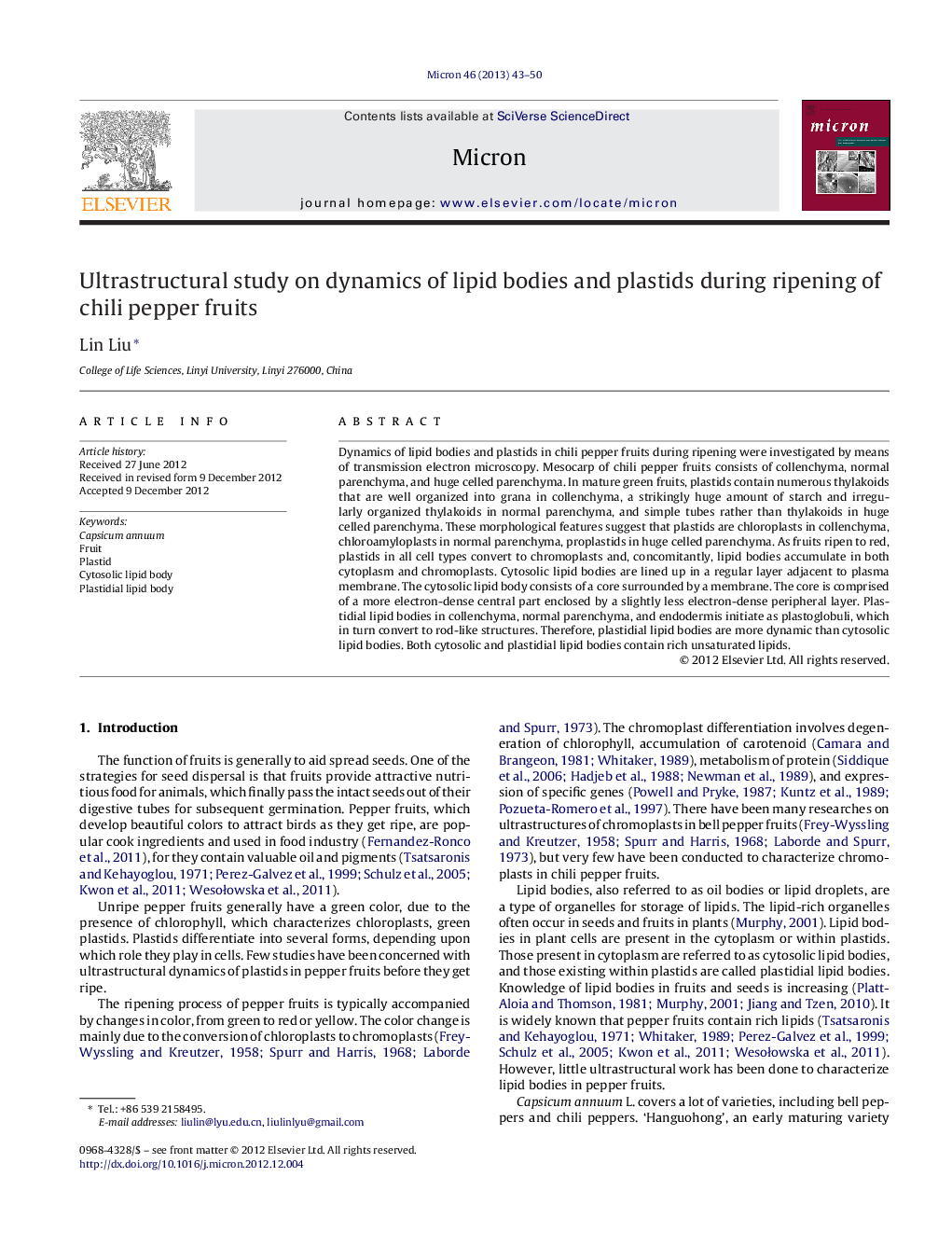| Article ID | Journal | Published Year | Pages | File Type |
|---|---|---|---|---|
| 1589186 | Micron | 2013 | 8 Pages |
Dynamics of lipid bodies and plastids in chili pepper fruits during ripening were investigated by means of transmission electron microscopy. Mesocarp of chili pepper fruits consists of collenchyma, normal parenchyma, and huge celled parenchyma. In mature green fruits, plastids contain numerous thylakoids that are well organized into grana in collenchyma, a strikingly huge amount of starch and irregularly organized thylakoids in normal parenchyma, and simple tubes rather than thylakoids in huge celled parenchyma. These morphological features suggest that plastids are chloroplasts in collenchyma, chloroamyloplasts in normal parenchyma, proplastids in huge celled parenchyma. As fruits ripen to red, plastids in all cell types convert to chromoplasts and, concomitantly, lipid bodies accumulate in both cytoplasm and chromoplasts. Cytosolic lipid bodies are lined up in a regular layer adjacent to plasma membrane. The cytosolic lipid body consists of a core surrounded by a membrane. The core is comprised of a more electron-dense central part enclosed by a slightly less electron-dense peripheral layer. Plastidial lipid bodies in collenchyma, normal parenchyma, and endodermis initiate as plastoglobuli, which in turn convert to rod-like structures. Therefore, plastidial lipid bodies are more dynamic than cytosolic lipid bodies. Both cytosolic and plastidial lipid bodies contain rich unsaturated lipids.
► Starch-filled chloroamyloplasts happen in normal parenchyma in mature green fruits. ► Proplastids occur in huge celled parenchyma and chloroplasts happen in collenchyma. ► Lipid bodies accumulate in both cytoplasm and chromoplasts as fruits ripen to red. ► Cytosolic lipid bodies are lined up in a regular layer adjacent to plasma membrane. ► Plastidial lipid bodies occur as globules, and convert to rod-like structures later.
